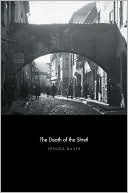Category Books
- Fiction Books & Literature
- Graphic Novels
- Horror
- Mystery & Crime
- Poetry
- Romance Books
- Science Fiction & Fantasy
- Thrillers
- Westerns
- Ages 0-2
- Ages 3-5
- Ages 6-8
- Ages 9-12
- Teens
- Children's Books
- African Americans
- Antiques & Collectibles
- Art, Architecture & Photography
- Bibles & Bible Studies
- Biography
- Business Books
- Christianity
- Computer Books & Technology Books
- Cookbooks, Food & Wine
- Crafts & Hobbies Books
- Education & Teaching
- Engineering
- Entertainment
- Foreign Languages
- Game Books
- Gay & Lesbian
- Health Books, Diet & Fitness Books
- History
- Home & Garden
- Humor Books
- Judaism & Judaica
- Law
- Medical Books
- New Age & Spirituality
- Nonfiction
- Parenting & Family
- Pets
- Philosophy
- Political Books & Current Events Books
- Psychology & Psychotherapy
- Reference
- Religion Books
- Science & Nature
- Self Improvement
- Sex & Relationships
- Social Sciences
- Sports & Adventure
- Study Guides & Test Prep
- Travel
- True Crime
- Weddings
- Women's Studies
The Death of the Shtetl »

Authors: Yehuda Bauer
ISBN-13: 9780300152098, ISBN-10: 0300152094
Format: Hardcover
Publisher: Yale University Press
Date Published: January 2010
Edition: (Non-applicable)
Author Biography: Yehuda Bauer
Yehuda Bauer is academic adviser at Yad Vashem, Jerusalem, and professor emeritus of Holocaust studies, Hebrew University. He is the author of many books, including Jews for Sale? and Rethinking the Holocaust, both published by Yale University Press.
Book Synopsis
In this book, Yehuda Bauer, an internationally acclaimed Holocaust historian, describes the destruction of small Jewish townships, the shtetls, in what was the eastern part of Poland by the Nazis in 1941–1942. Bauer brings together all available documents, testimonies, and scholarship, including previously unpublished material from the Yad Vashem archives, pertaining to nine representative shtetls. In line with his belief that “history is the story of real people in real situations,” Bauer tells moving stories about what happened to individual Jews and their communities.
Over a million people, approximately a quarter of all victims of the Holocaust, came from the shtetls. Bauer writes of the relations between Jews and non-Jews (including the actions of rescuers); he also describes attempts to create underground resistance groups, efforts to escape to the forests, and Jewish participation in the Soviet partisan movement. Bauer’s book is a definitive examination of the demise of the shtetls, a topic of vast importance to the history of the Holocaust.
Publishers Weekly
Eminent Holocaust historian Bauer (Rethinking the Holocaust) examines the death under Soviet and then Nazi occupation of the shtetls, small Jewish communities where lived 30% to 40% of prewar Polish Jewry and one-fifth of all Jews killed in the Holocaust. Burdened by poverty and anti-Semitism, shtetl Jews demonstrated solidarity and devotion to Judaism and family. With the establishment in 1939 of Soviet rule, these traditions and the institutional structures of the Jewish communities collapsed quickly and with little resistance; Bauer speculates on why this was so. From the German occupation in the summer of 1941 until the winter of 1942, Jewish resistance was mainly unarmed, in the form of educating children, baking Passover matzos, and smuggling food. Most of the Polish shtetl Jews were brutally killed between March and December 1942 by Einsatzgruppen (specialized German murder units) or by local militias under German command. The behavior of Jewish leaders ran the gamut from heroic to corrupt, and attitudes of gentile neighbors were usually indifference, suspicion, hostility, and murderous anti-Semitism. Although too specialized for lay readers, Bauer's valuable addition to Holocaust scholarship spotlights an under-researched aspect of the Jewish genocide. Maps. (Jan.)
Table of Contents
Maps
1 Background 1
2 The Thirties 13
3 The Soviet Occupation 32
4 The Holocaust in the Kresy 56
5 The Shtetl Community and Its Leadership, 1941-1943 73
6 The Neighbors 92
7 Rebels and Partisans 121
8 The Death of the Shtetl 152
Notes 171
Works Cited 195
Index 199
Subjects
 European History
European History  Eastern European History
Eastern European HistoryHistory
 Military History
Military History  World War II
World War IIHistory
 World History
World History  Jewish History
Jewish HistoryNonfiction
 Social Sciences
Social Sciences  Jewish Studies
Jewish StudiesScience & Nature
 Social Sciences
Social Sciences  Jewish Studies
Jewish StudiesSocial Sciences
 Jewish Studies
Jewish Studies  Jewish History
Jewish HistoryNonfiction
 History
History  European History
European HistoryNonfiction
 History
History  Military History
Military HistoryNonfiction
 History
History  World History
World History
